The Hellraiser franchise has been loved and admired across generations. However, very little is known about the backstory or stories, to be precise that gave shape to this Clive Barker classic.
The hellish world depicted in the movie has a bloody history spanning hundreds of years. Amongst other cinematic depictions of hell, Hellraiser is the most unique with a massive labyrinth where the mighty Leviathan resides.
The Cenobites and Pinheads might be fearful however they are nothing but mere servants to the Leviathan who seems to be the Hellraiser version of Satan. This entity turns people into Cenobites and hell is full of these unfortunate souls. At the center of all evil lies the Lament Configuration puzzle.
This video will dig deeper into the lore of the Cenobites while explaining in detail the backstories surrounding the puzzle box and the creatures that is bound to give you a fresher perspective of this narrative.
What Is The Puzzle Box?
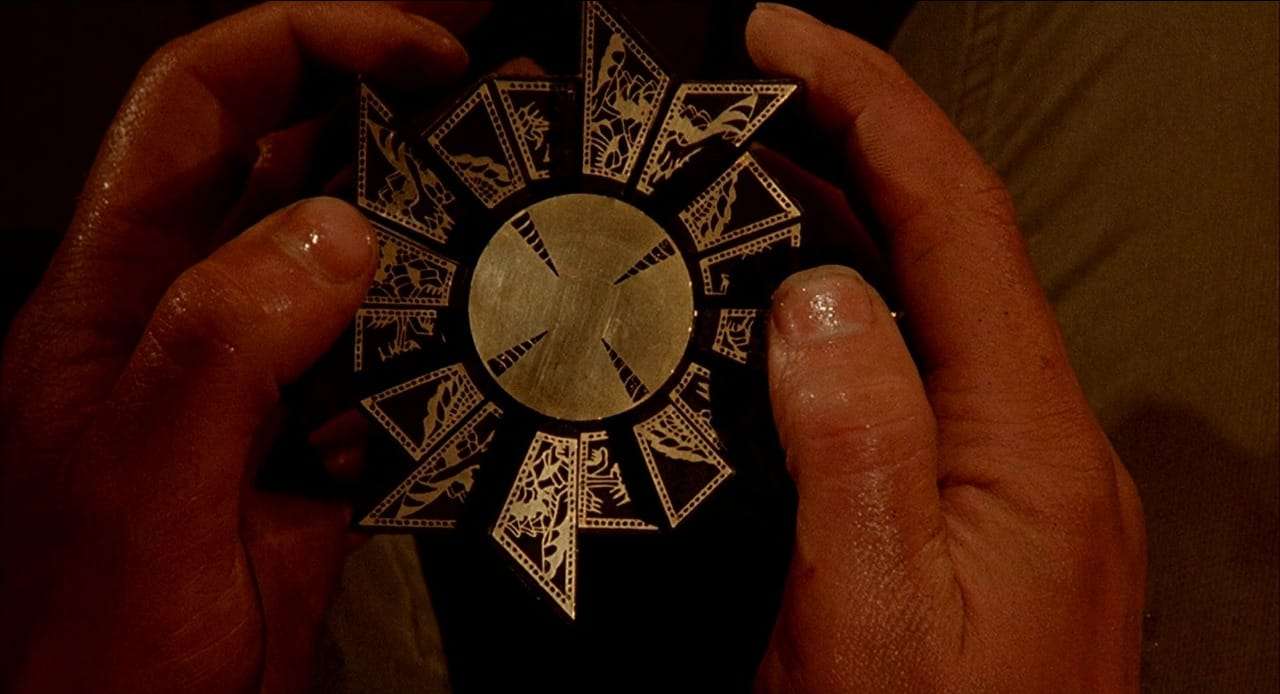
As mentioned earlier, at the very crux of the Hellraiser plot lies a mysterious puzzle box that has previously featured in the original work of Clive Barker. The Lemarchand’s Box is the best-known version of these cubes, named after its creator Philip LeMarchand, who was an 18th century architect and designer.
A devotee of the occult, fascinated by the paranormal world, Philip is known to have created the first puzzle box known as Lament Configuration or the Box of Sorrows. Once this puzzle was solved by someone, a dolorous bell would be heard ringing at a distance.
It would be the announcement for the arrival of the dreaded Cenobites- you could say it is more of a key that unlocks the hellish world that unleashes the horrors stored within. Whenever someone solves the puzzle, a bridge is created that permits beings to travel in either direction between both dimensions.
Throughout the series, there has been a raging debate that tries to explore the portrayal of Hell. Is it similar to the Christian iteration, or is it simply some sadomasochist zone that holds unspeakable terrors within?
A Brief History of the Puzzle Box
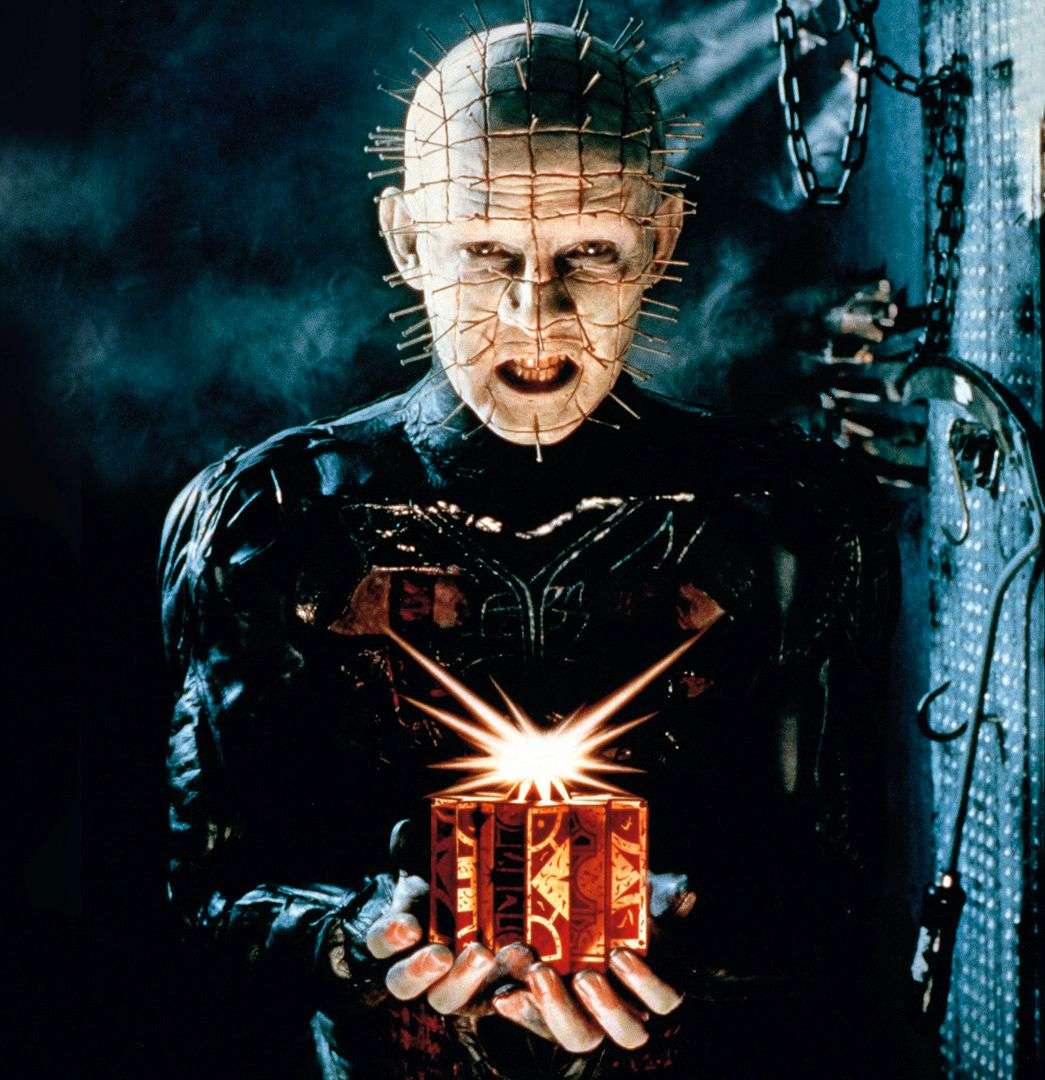
While Philip LeMarchand was known to have created the first puzzle box, this demon summoning block actually dates back thousands of years prior. Ever since humans have believed in the concepts of Heaven and Hell, there were people who sought to learn more about the entrances to these realms.
It is believed that the keys to them vary greatly, and they often mask themselves in the appearance of a fetish or a fantasy that is intended to lure the victim into its clutches. The puzzle box was a commonly used device to gain entry into the hellish realm of pain and sufferings.
It is cube like, its image found in most ancient religions and cultures across the World. In the Yantra, a document of Tantric traditions in India, similar patterns to summon the evil is noted.
The puzzle box unlocked forbidden knowledge and it could only be solved through obsession. Those who were able to solve it would come face to face with the reality of Hell. While Philip LeMarchand was credited for the first cube Albertus Magnus, a renowned philosopher of the 13th century, provided the original design for it.
Philip was an avid scholar and he took an interest in the artifacts of antiquity. His idea is borrowed from many of the designs that he came across while scanning through some infamous sources.
Philip LeMarchand was a member of the Freemasons and was acquainted with Frederick Braun while attending a lodge meeting. The two engaged themselves in a discussion regarding artistic problems that created an obstruction in creation.
For example, the unyielding properties of steel were going to be a serious problem for him, and he had to find the right material to create the box. Frederick Braun lent him a treatise on secret geometry. This piece of literature was extremely helpful because he learned about Reiss Kunst, a scholar in astrology, mathematics, and geometry.
Kunst had titled the graphic designs as Cenobyte’s Welcome, and Spiral of Desperation, and his book was full of complex designs that were exactly what LeMarchand wanted to create. Kunst himself was inspired by the designs of Albertus Magnus, and his creations were made from a metal that was previously unknown to him.
It was more like a dark polished stone, or some kind of lacquered wood that felt somewhat like a warm soft metal. Its special features were that it was hard and had no significant radiant heat. Was this going to be the key element to frame the puzzle box?
Later, Philip used resources belonging to an English book collector Geoffrey Chance who was in possession of many esoteric volumes. While Philip had difficulties understanding the content, once he did he was fascinated by the references to Cenobites on these novels. These references indicated the demonic nature of the Cenobites and the frequent references rekindled his interest even further.
There Are Multiple Boxes
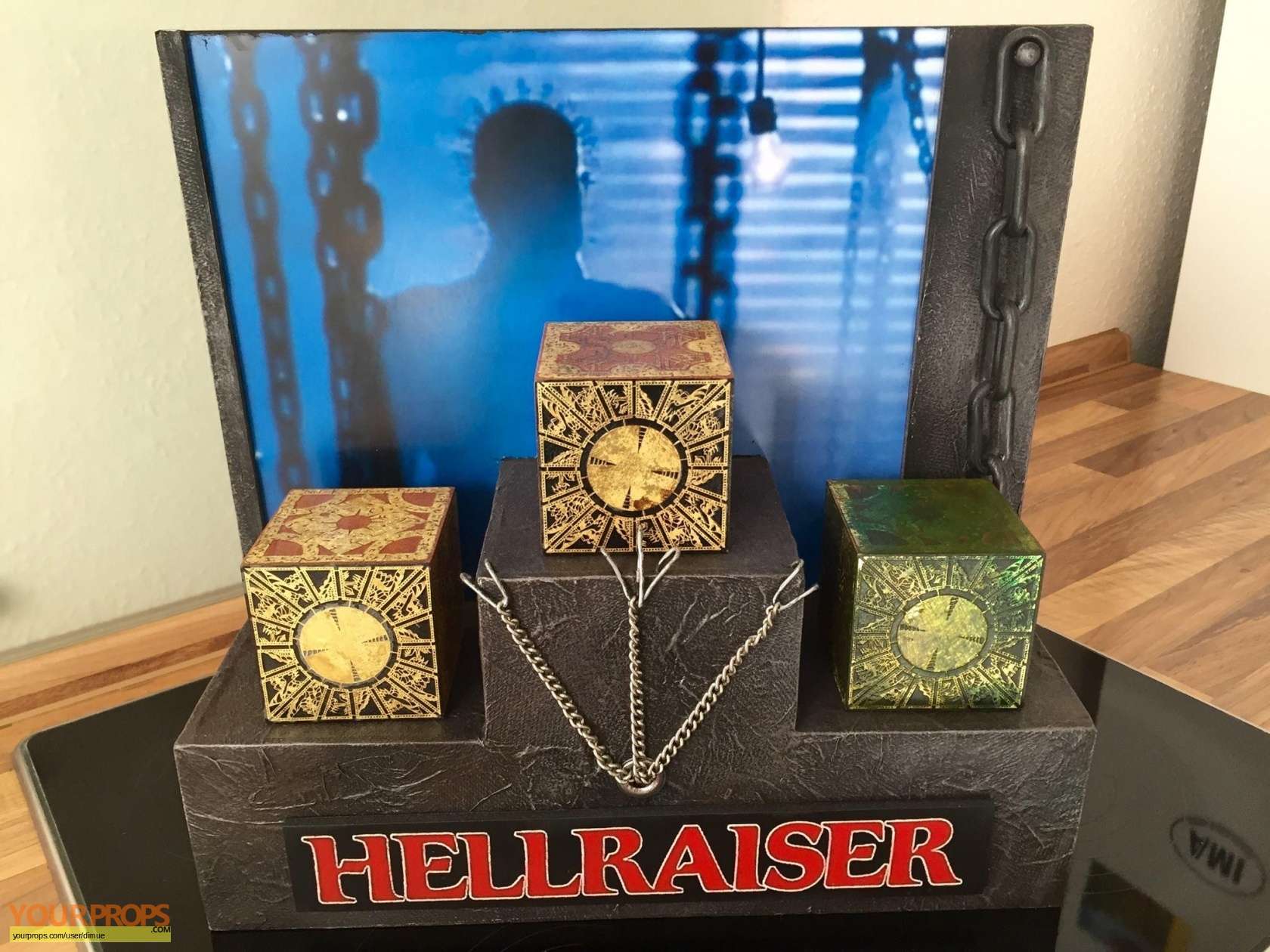
There have been several boxes for eons, even LeMarchand has encountered several works that highlighted the evocation of cenobites previously. John Dee’s texts suggested that cenobites have their own realm holding their diabolical secrets.
There is another interesting account that he came across which suggested that Livingston Merrick had journeyed into Hell after he summoned the cenobites using a magical formula. Philip’s visit was a shocking revelation when he saw a geometric form instead of Satan ruling Hell.
His research eventually took him to Albertus Magnus’ final box, the pages of which contained the authentic formula to summon the fabled cenobites. It was with the help of Cenobite Baron that he constructed the first of his many puzzle boxes that eventually came to be referred as the Lament Configuration.
He followed his first with several such puzzle cubes that held the answer to unlock hell. The twist is that the answer was in the heart of the user and their ultimate desire would be the solution. He is rumored to have made 270 such figures which at the time were quite popular across Europe.
Interestingly enough, those who did purchase these boxes were found missing or dead under mysterious circumstances (surprise, surprise)! One day, LeMarchand himself vanished while the boxes kept changing hands bringing us to question if he himself became a victim of his own creation. We would never know.
A number of them were destroyed during the World Wars while the remaining were scattered around the World leaving an option for the cenobites to come back. Of all, The Hollow Heart, The Triumph of Judas, and Lament Configuration are the best known.
How do the puzzle boxes work?
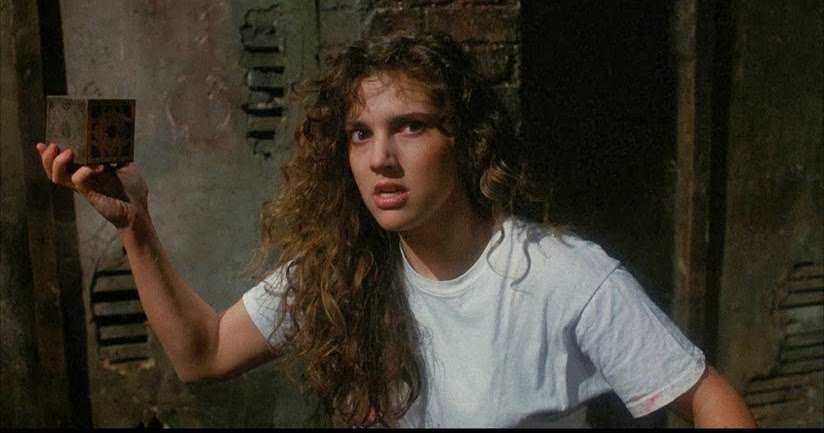
The puzzle boxes could be activated by pressing some hidden pressure points in a particular order. The shape of it keeps changing because of various points that are pressed. Every finger had to be used to squeeze the surface.
Once solved, the portal to the labyrinth would open and the cenobites would make their entry with a ringing bell. As they made their entry into the human world, heavy gusts of wind and lightning would shatter anything standing in the way.
On their arrival, the cenobites escort the puzzle solver to the Labyrinth where eternal torture would await them while the room would be restored to its former state.
There lay one small catch that one could send the cenobites back to their world if they were able to reverse the sequence. It could also be reshaped by the cenobites such that it becomes powerless.
The process could be reversed by human hands. If it was done while the box was in the Labyrinth it could release many trapped souls back into the human world. Therefore, one need not lose hope even if they were taken away by the cenobites because they still had a chance to return.
What Are Cenobites?
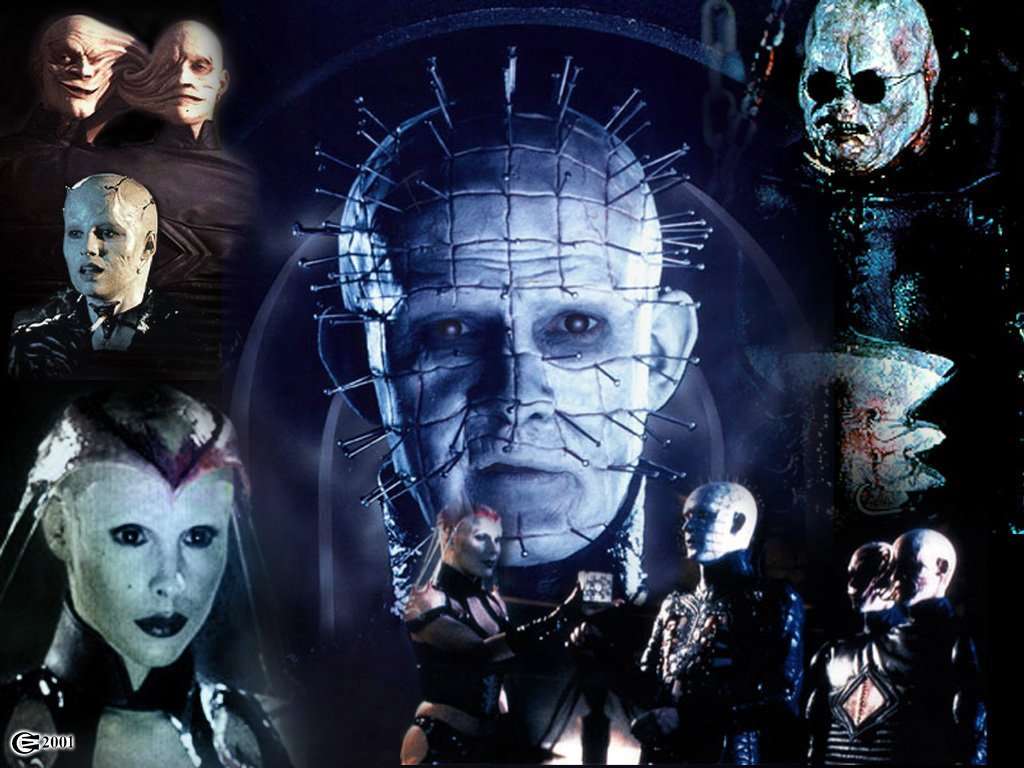
Since we have divulged much on the box, let’s explore what cenobites are. Cenobites are extra dimensional creatures that serve the Leviathan. They could be brought into the Earth’s reality by some unearthly artifacts that would help them travel through space and time. The cenobites vary in their appearance and motivations to the extent even their philosophies and abilities are different from one another.
However, there is one thing common in them, and this is their horrible mutilations or body piercings and fetishes. They are vicious and have no empathy towards their victims. One could say that their attributes are similar to traditional demons, and it is their unorthodox definitions of pleasure that set them apart.
It is wrong to say they were immoral because they are simply loyal to their craft. The film version does show a more severe side to the cenobites, but they are dedicated to their duties.
In the movies, the cenobites would decide exactly when to appear and they took various forms to manifest themselves. Their weapon of choice seemed to be their hooked chains and they all had some degree of telekinetic powers.
They also possessed incredible superhuman strength and were not susceptible to pain or damage. Pinhead, is of course the most notorious among them, feared and admired by an entire generation!
Where do Pinhead and the Cenobites come from in Hellraiser?
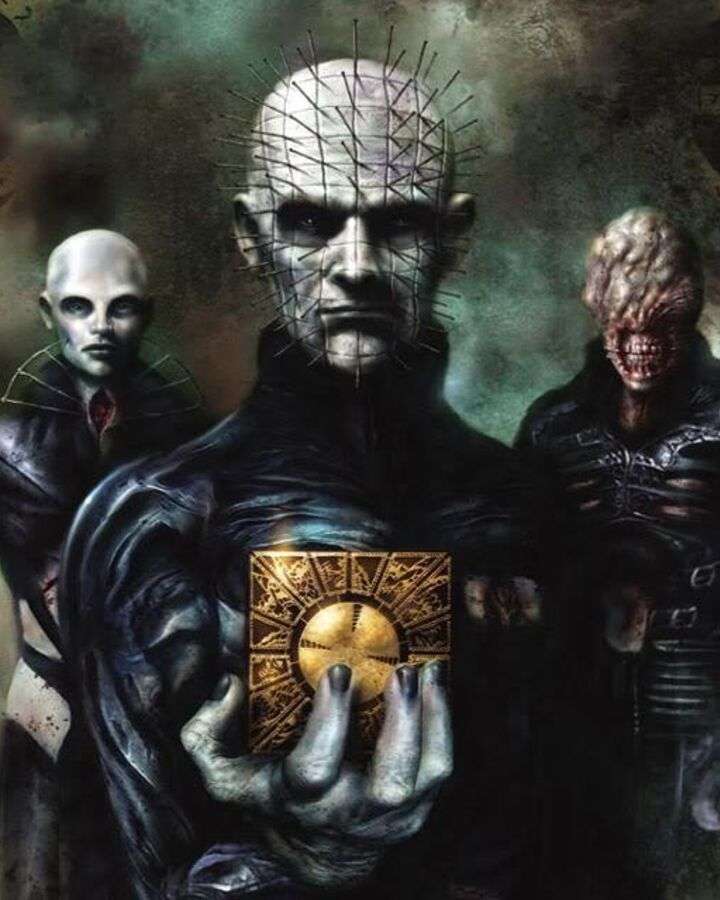
The appearances of these creatures keep varying in the movies and so does their way of being summoned. In the first film, they appeared after a puzzle box was solved. The following sequences saw variations in their appearances.
For instance, in the third entry, cenobites are shown to be created from humans who opened the portal, while in Hellraiser 4: Bloodline, the cenobites are just a form of an upgraded Hell. The consequent movies have not been impressive by any standards, and they all dealt with the fates of those who solved the box. In fact, by the last movie Hellraiser: Judgement, there is no need for a puzzle box to summon these creatures as simply an invitation suffices.
Don’t waste your time folks, we advise sticking to the first few only!
How Can Someone Become A Cenobite?
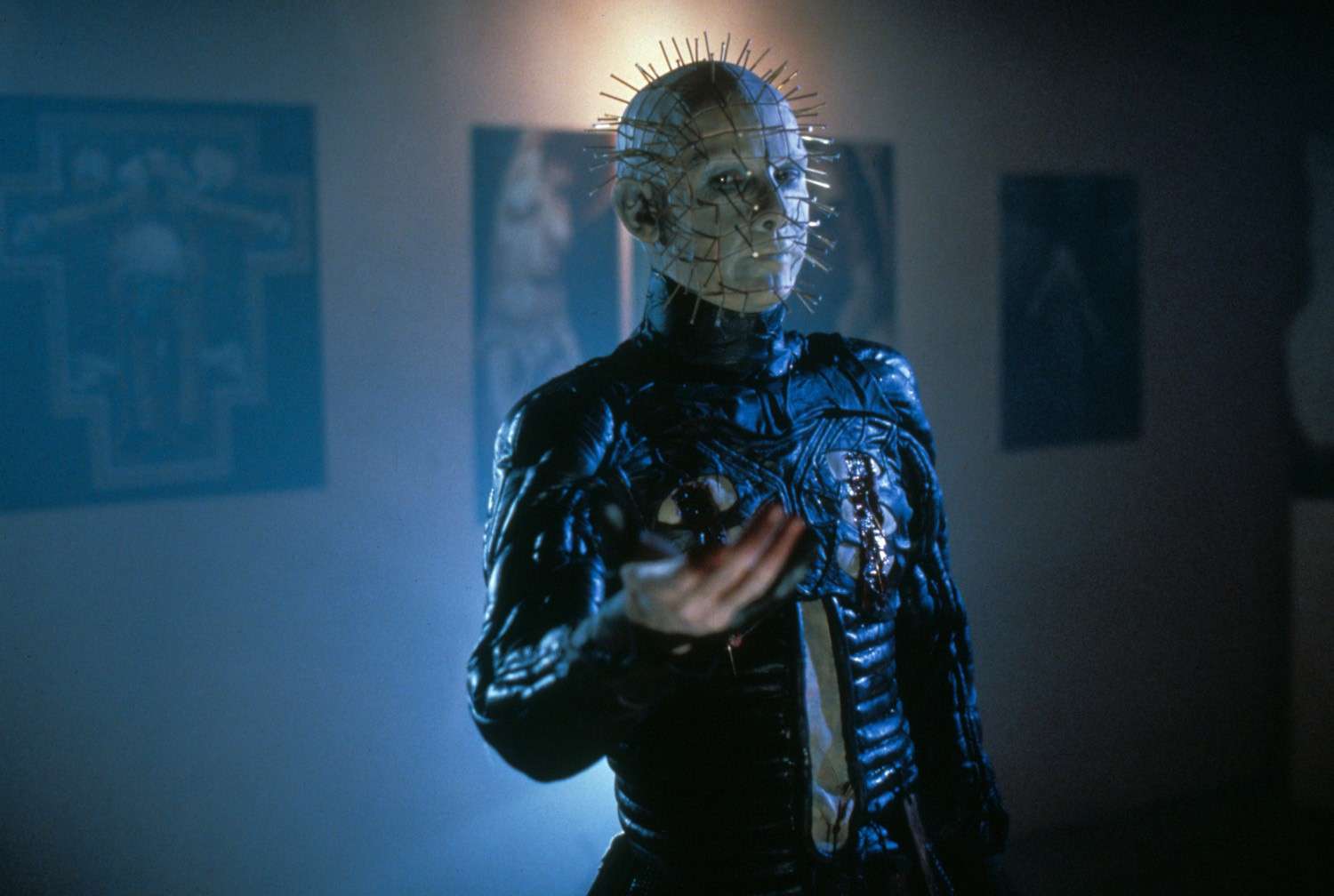
The information regarding this is rather inconsistent and there are multiple answers to this query. It might seem obvious that anyone who opens the Lament Configuration becomes a cenobite later, but it is revealed in Hellraiser II, when the Hell Priest stops the other cenobites, that an individual must desire himself to visit the realm before he is taken to the labyrinth.
This is clearly contradictory to what the Priest said in the first film where he claimed that Kirsty would have to accompany them to Hell. It is probably a bit of both where someone has to first open the puzzle box and then willingly want to be a part of the devilish world where pain is pleasure!
What Is The End Goal Of Cenobites?
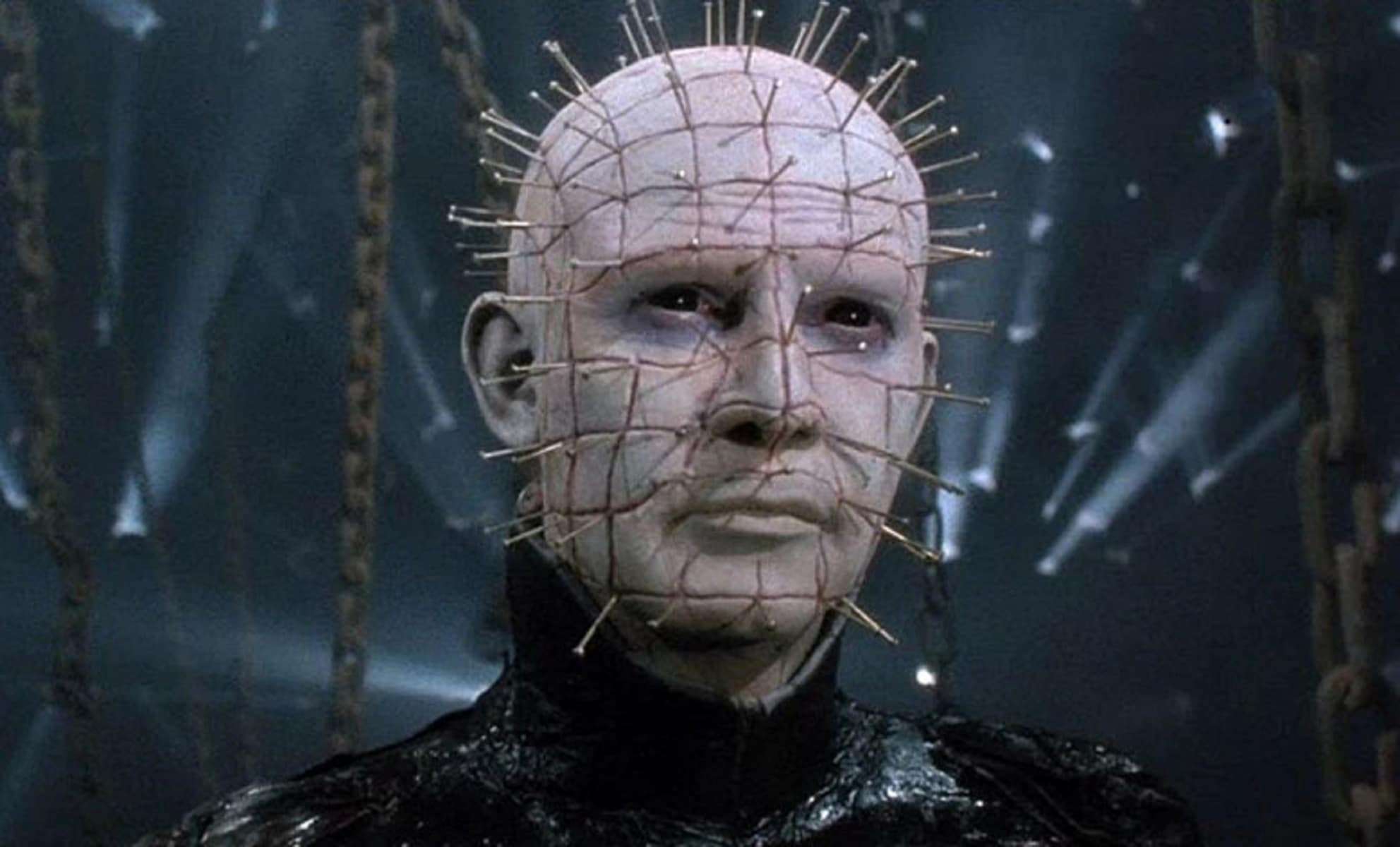
This is again something that varies significantly from one cenobite to another. They seem to be pretty ambiguous in their roles, and you see all kinds of cenobites with different motives. Broadly speaking, they are simply serving Leviathan, and doing their duty.
However, their evil nature is not consistent. For instance, Pinhead is fairly neutral while The Doctor is simply psychotic. Then again, some of the cenobites are totally brainwashed with no memories of their past life.
They thrive in the pain that they inflict upon themselves and others. There are some who remember their past and are more calculated in their moves. It seems that they do not have a personal goal as such. They are merely sentries of their hellish zone performing their duty of collecting the souls that the box enticed.
Are Cenobites Angels Or Demons?
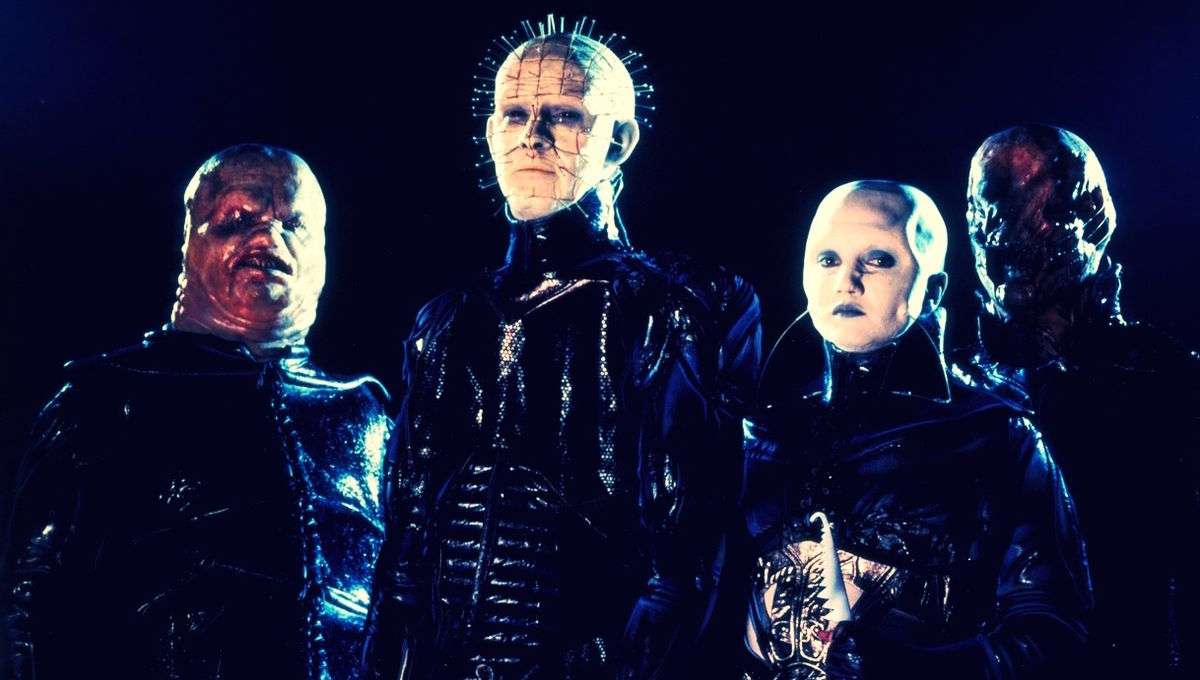
The dialogues of the Pinhead can answer this question adequately. He clarifies that these creatures are demons to some while being angels to the others. Pinhead does things that cause immeasurable pain to others, and it is easy to say that he is evil. However, in the second movie we are reminded that he was once a simple man named Elliott Spencer.
We slowly have a reason for the evil that he does, and we see that he is more duty-bound than anything else. There are other stories that simply show him working towards his own agenda and doing evil stuff to gain more power.
Yes, there is ambiguity towards the nature of the cenobites if you consider the behavior and actions of Pinhead or any other member of his species. We personally prefer the lawful evil part, where there is some justification for the things they do and the torture that follows. A villain without a purpose is hardly intriguing!
How Clive Barker Got The Idea Of The Character Designs?

The cenobites and Pinhead remain as one of the most iconic villain duo in horror. Clive Barker really took his time to research and gives his audience the ultimate monstrous entity to feast their eyes upon. As for Pinhead, Barker used inspirations from all over the world to put together the design.
The first thing that will strike you about Pinhead is that he is extremely intelligent and articulate. This reminded us of Count Dracula, and the mannerisms and witty one-liners only affirmed our memory.
Clive Barker was inspired by African fetish sculptures, and the aesthetic bears a strong resemblance to some of these. His visits to the S&M clubs all over the world helped him create a convincing sadomasochism angle in the character. In general, a cenobite refers to a religious leader, but Barker’s unforgettable creation makes us associate it with something horrifying.
He called them Hell Priests and wanted them to resemble super-butchers who could do unspeakable things without batting an eyelid! Pinhead has been the defining character of the franchise, thanks to the brilliant work of Doug Bradley, but Barker’s design also deserves a lot of credit. The pins going through his skull and face, and the terrifying looks allotted to the other cenobites made us fear every puzzle box we came across in our life!
What is the point of the Hellraiser film franchise?
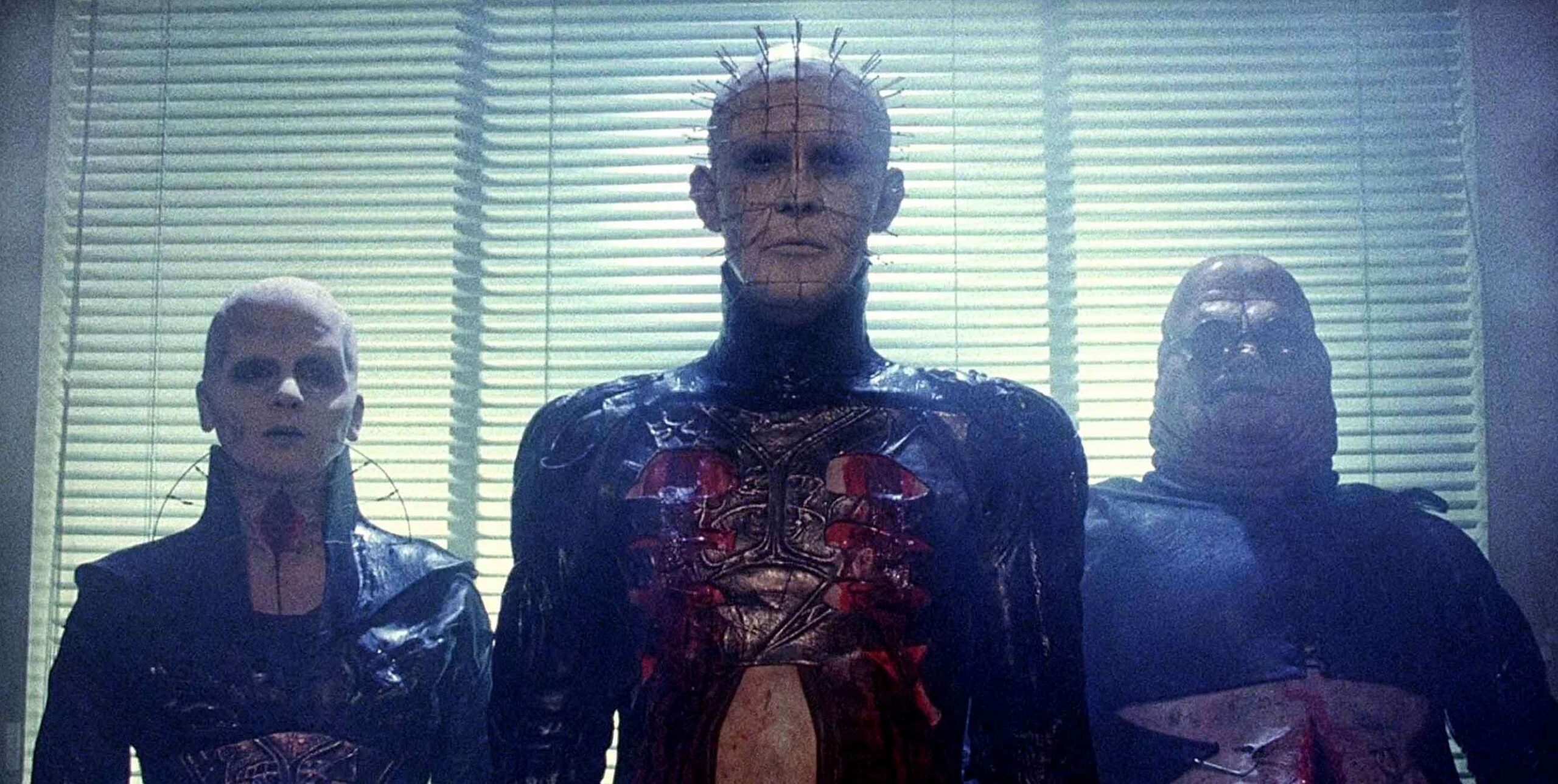
Well, this has to be one of the most obvious questions that come to mind when someone watches the movies. What did the makers actually intend to prove through their narrative? We believe one of the core lessons through these stories is the demonic potential that is present within humans.
Everyone has their set of secret desires, and there is hardly a censor to these suppressed thoughts. When someone gets a pathway in their weak moments to fulfill those desires, they are ready to go to any extent to accomplish them. They do not care about the consequences, and trade just about anything to finish their mission.
If you consider this narrative, then the Cenobites start making sense. When the urge to accomplish something is so intense, humans are prepared to go to any extremes, even if it means that they would be a skinless monster living on a dirty mattress eating vagrants.
But, the puzzle box comes with its set of rules and there is always a price to pay!
Pinhead is more like the gatekeeper safeguarding those rules. The series often comes across people who are trying to find a loophole in the rules, but the outcome is usually the disturbing and graphic gore that is a trademark of the franchise.
We have seen time and again in the stories that when people finally get their desires fulfilled, they turn into a monstrous version of themselves. But, were they already the terrible monstrous entity simply masked by their acceptable version of themselves?
We can get another interesting viewpoint if we consider the background of the author. Clive Barker is openly gay, and just before Hellraiser was filmed, Pope John Paul II stated that homosexuality was evil.
Clive Barker was quite upset with the comment and it is possible that the movie is a form of protest for the lack of support shown by the Pope. The hellish dimension could be purposely made different from the version in Abrahamic faiths.
Cenobites are beings that have accepted their form, however it might be that their pleasure is supposed to be a perversion. Monsters threaten normality, and what better way to stamp his authority than to introduce Pinhead and his minions in a well-crafted plot.
Our Final Words
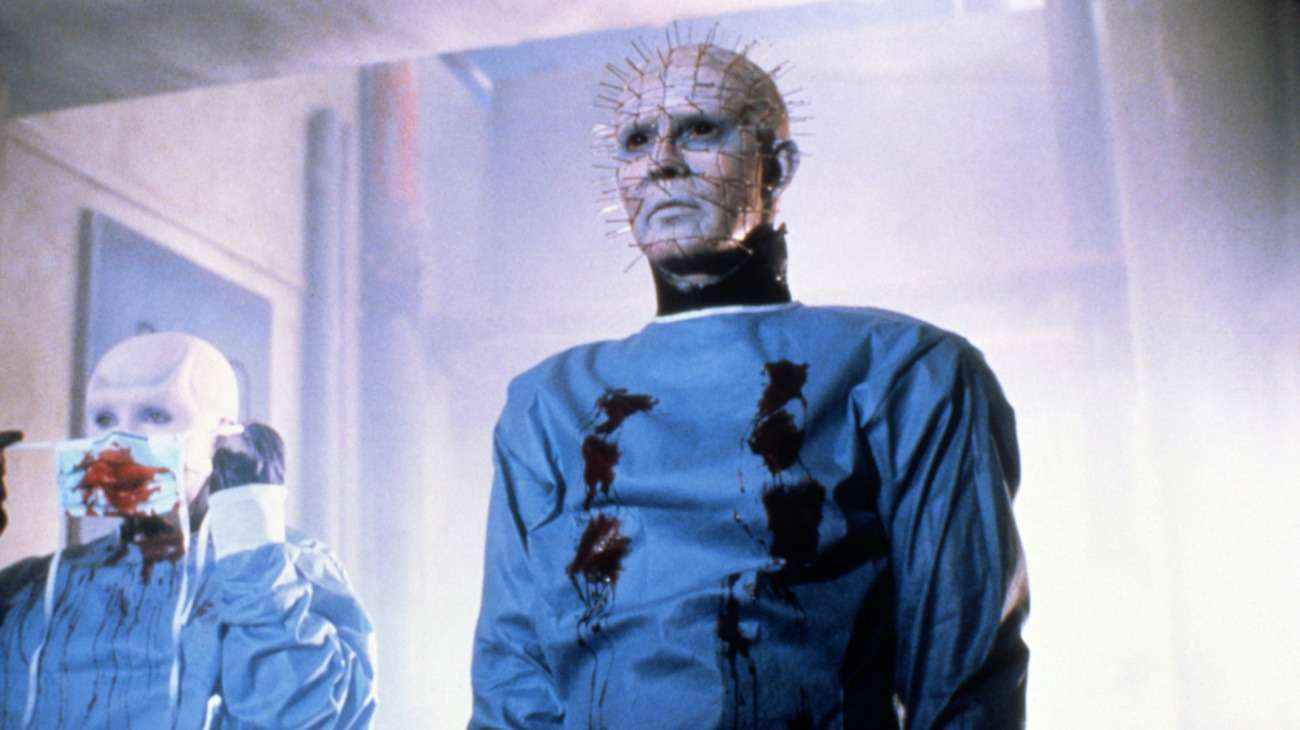
The discussions, debates and interpretations around this captivating plot will continue for decades. After all, Hellraiser is a cult classic that is not going to be forgotten anytime soon! You may or may not agree with some of the views we expressed, but you will certainly admit that this thrilling horror franchise has given us some very entertaining content.
